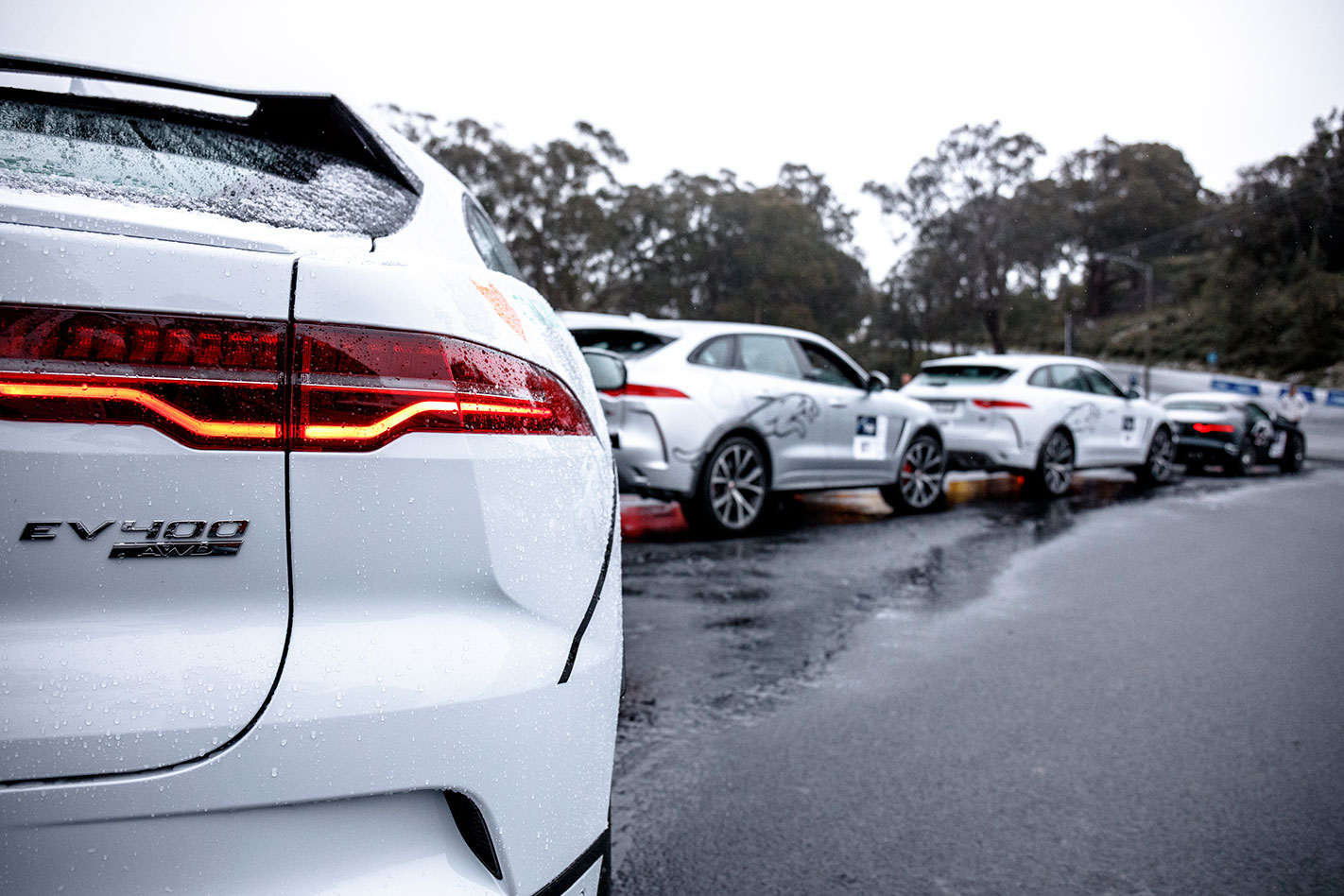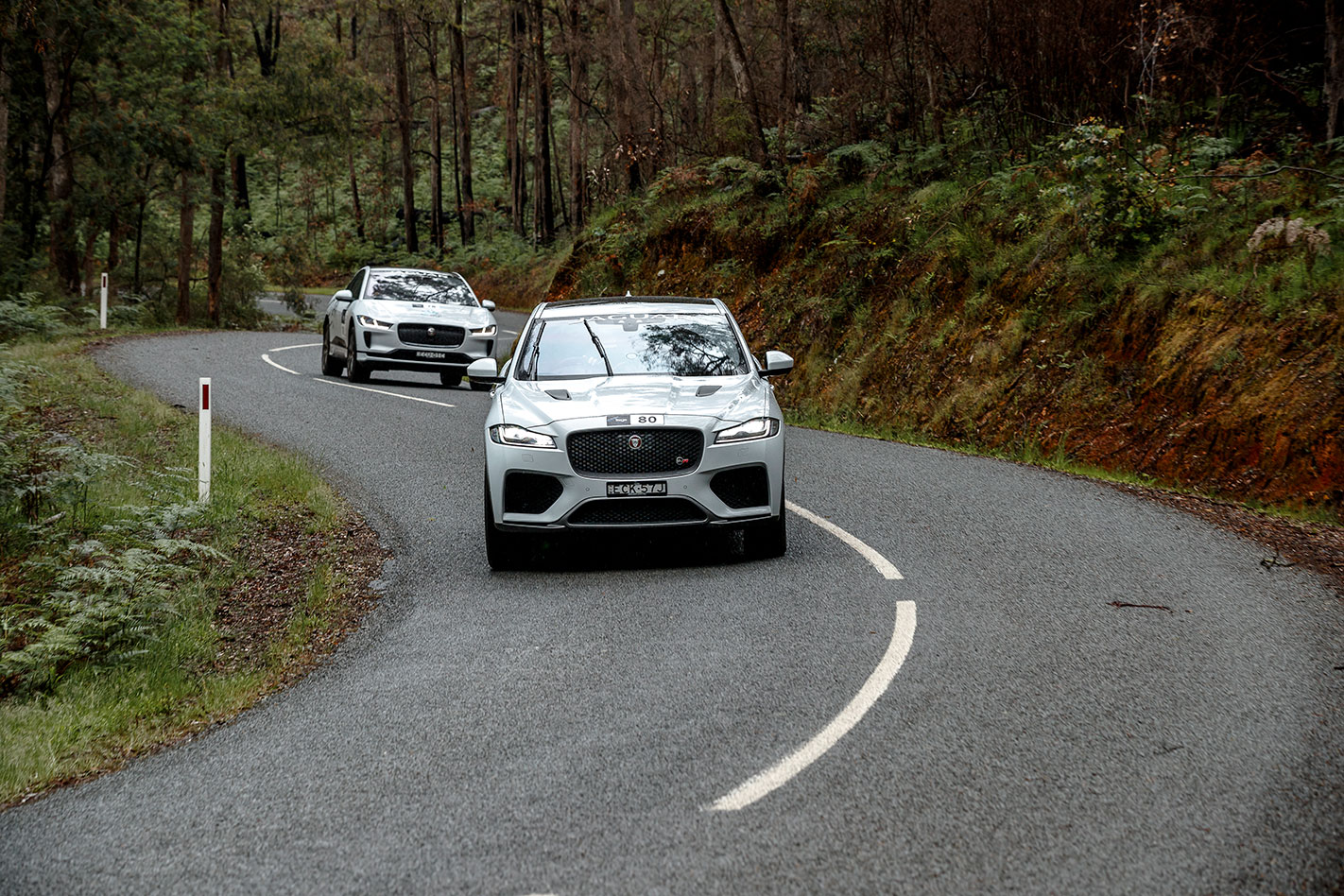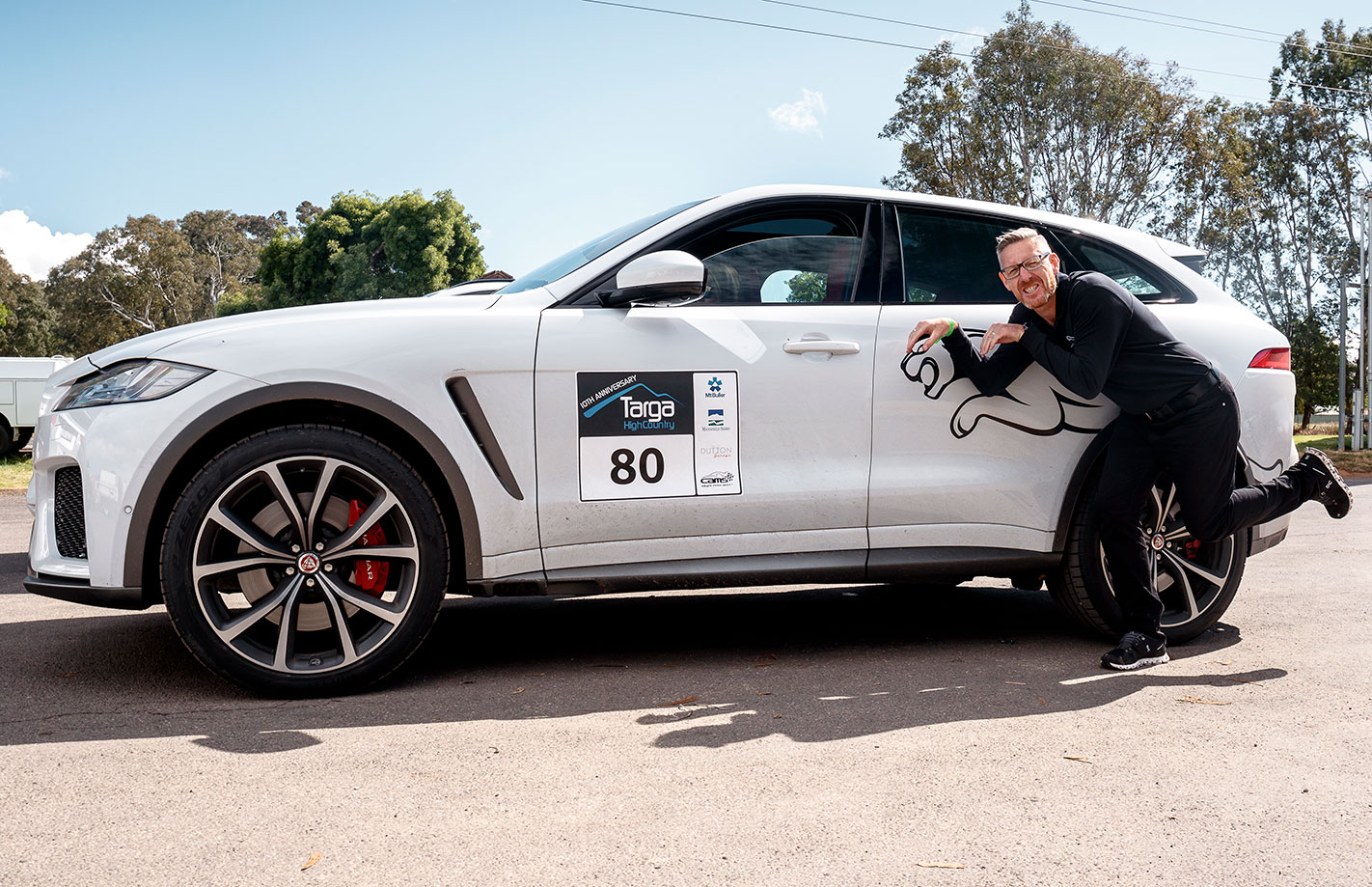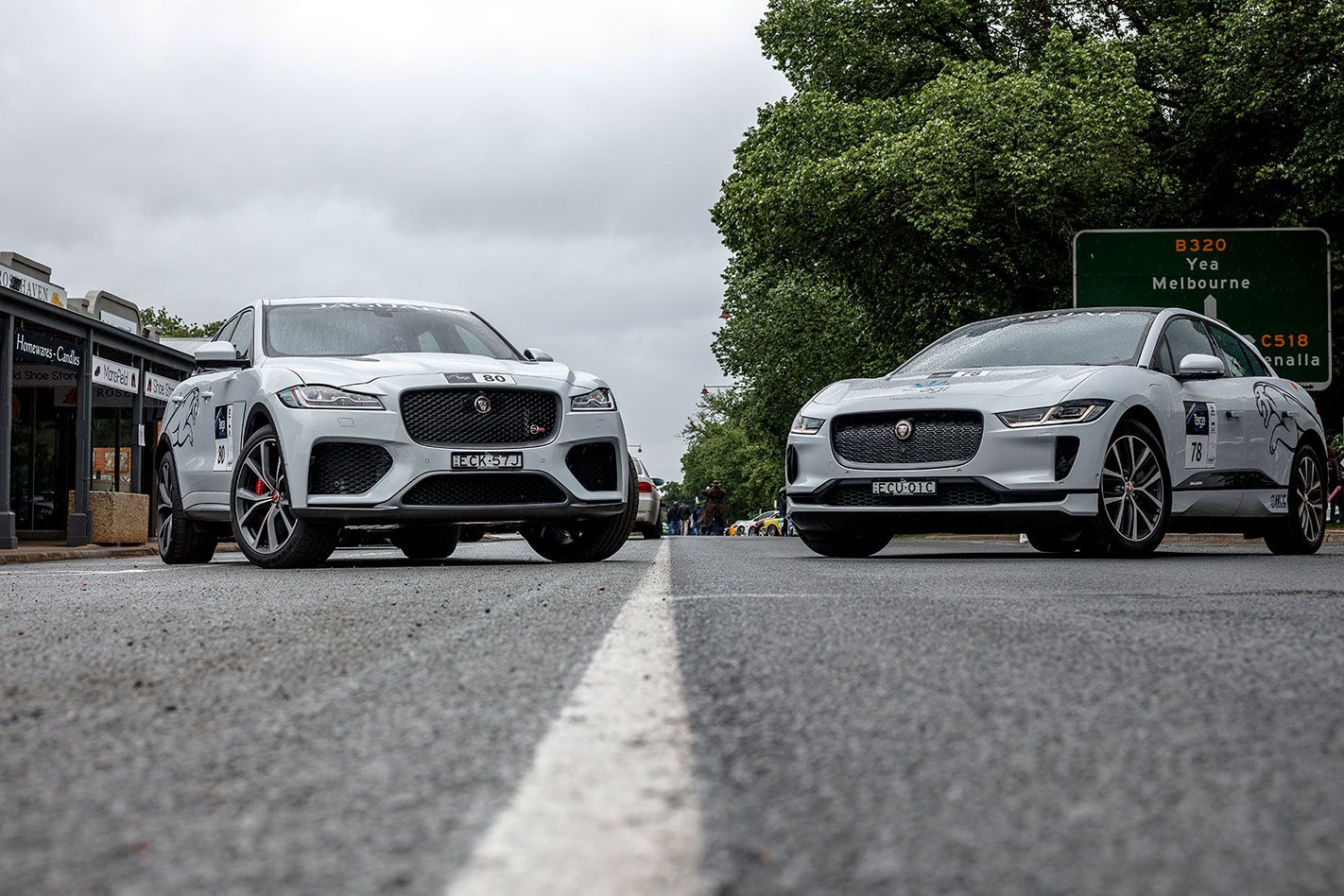This shouldn’t be happening. Ahead of me is a Jaguar F-Type SVR convertible. It has a power-to-weight ratio of 246kW/tonne. I’m driving an electric I-Pace SUV, with a comparatively feeble power-to-weight figure of 138kW/tonne. Both are all-wheel drive, both on similar rubber, yet out of every corner, the I-Pace is monstering the sports car, gobbling up metres on it, trying to drive through its quad exhausts such that the collision warning system is a constant accompaniment.
It feels as if everything you thought you knew about performance needs to be reset. If you figured an electric future was one bereft of enjoyment or entertainment for the keen driver, think again.
Targa High Country 2019 will be remembered as the year the mountain bit back. The 10th anniversary running of this event in the Victorian alpine region saw unprecedented unseasonal snowfalls on Mount Buller, the home of the event, and where it wasn’t snow, slush and ice, it was often wet, greasy, foggy or any other combination of nasty. We had a pair of punchy SUVs from Jaguar to compare and contrast: the electric I-Pace and the petrol-powered F-Pace SVR. The combination of drive going to each corner and a reasonably treaded tyre were a boon when the mercury dropped below zero and some of the competition cars were gliding down the hill, using the guardrail like your dad playing Gran Turismo.

On paper, the F-Pace should be the quicker thing. It packs 405kW/680Nm, does zero to 100km/h in 4.3 seconds and its kerb weight of 1932kg ought to put it at an advantage in all aspects of go, stop and steer. The I-Pace is good for 294kW/696Nm, stops the clock at 4.8 seconds and weighs a chubby 2133kg. Both cars run on a version of Jaguar’s modular D7 chassis, so they’re not as disparate as their initial launch dates might suggest.
F-Pace SVR first. Targa etiquette dictates that the exhaust should be dialled up to a volume redolent of Jimmy Barnes stepping barefoot on a Lego brick, but it’s soon apparent that the level of aggro elsewhere needs to be dialled back a notch. The adaptive dampers are best left in their most comfortable mode, and the engine response in Comfort also gives decent throttle modulation. Switch it into Sport and it’s like turning the loud pedal into a switch – not ideal when you’re tentatively probing for grip on corner exit.
It requires a certain discipline to drive. Brake in a straight line, settle the weight onto the nose, roll gently from brake to throttle, turn in and gently feed gas to the corner exit. Start trail braking or making sharp stabs of throttle and the F-Pace can feel clumsy. It’s got a mighty front end, but it’s possible to quickly overwhelm the brakes with really ambitious corner entries. Keep all of your inputs classically correct and it’s monstrously quick, and the sound of the 5.0-litre supercharged V8 bellowing will have you cracking your window open a touch, precipitation be damned. The only downside is that the engine spikes your adrenaline such that after a prolonged spell behind the wheel, you feel wrung out.

The I-Pace has none of the charismatic soundtrack. The motors will whine gently when the accelerator is floored, but that’s about it. Switching the vehicle into full regenerative braking allows one-pedal operation, prolongs range and saves the friction brakes for when you’re diving downhill into tighter corners. Due to the low centre of gravity, body control is way better than the F-Pace, and you can therefore brake later and deeper into the corner, tucking the nose in to hook into the gutter at apex before jumping on the throttle and sending the vehicle out in a frenzied four-wheel smear up the road. It’s phenomenally rapid in the twisty stuff, without quite having that nauseating level of straight-line punch of a high-performance Tesla.
Naturally, driving a 2.2-tonne vehicle in this demented manner exacts a certain price. On the longest, 48km stage of the event – almost the entire length of the tortuous Eildon to Jamieson road – the tyres started feeling a little overwrought about 30km in, and the range, already dented by the cold weather starts, dips sharply. We were able to charge at Buller and at lunch stops in Eildon, courtesy of an arrangement with AGL energy.
While a few percent was knocked off the 90kWh battery pack’s total range, what was less expected was that the cold would extend the charging time on the mountain top. The 10-hour charging time to 80 percent that you’d expect from the 7kW charger available at Buller was blowing out by two or three hours due to the extremity of the conditions. Still, the I-Pace managed the longest days at Buller with some forward planning and no cheating. We’d fully expected Jaguar to have secreted a diesel generator somewhere and were determined to try and photograph it, so you can imagine our disappointment when there was no such sleight of hand.

Given the option of the two cars for a run at Targa’s best stage, I’d take the I-Pace without a shadow of doubt. It’s faster across country, dizzyingly exciting in the way it exits a corner, and its composure on bad roads in terrible conditions is just jaw-dropping. I don’t think I’d have been any quicker in a current 911 GT3 RS.
If asked which of the two cars I’d bring to Targa as a private entry, I’d certainly opt for the F-Pace SVR. It rewards the keen driver, and I’ve long believed that a car should be an enabler, an outlet for spontaneity. I don’t want to plan my journeys with military precision, or be denied if using a car now means I won’t be able to use it later. Even if that means queueing in the 100-car line for 98RON at Targa, the F-Pace still makes a more satisfying proposition for the here and now.
The I-Pace might well be the car for tomorrow, but right now, a V8 carries the day.

High Anxiety
Is there a more challenging driver’s road in Australia than the queen stage of Targa High Country, the bitumen ribbon that stretches 57.5km between the outskirts of Eildon and Jamieson? You get 250 corners packed into that distance (one every 230 metres) and the road climbs from 220m above sea level at Eildon to nearly 800m halfway through. Think two and a bit Nordschleifes with big drop-offs, variable surfaces, a lot more vert and no entrance fee. Plus a 100km/h speed limit that you won’t hope to achieve through the majority of those corners.
Specs
Model | Jaguar I-Pace EV400HSE | Jaguar F-Pace SVR |
Propulsion | 2 x AC synchronous motor | 5000cc V8 (90u00b0), dohc, 32v, sc |
Max power | 294kW | 405kW @ 6000-6500rpm |
Max torque | 696Nm | 680Nm @ 2500-5500rpm |
Transmission | Single-speed reduction gear | 8-speed automatic |
L/W/H/WB | 4682/2011/1565/2990mm | 4737/2071/1670/2874mm |
Weight | 2133kg | 1932kg |
0-100km/h | 4.8sec (claimed) | 4.3 seconds (claimed) |
Economy | 21.2kWh/100km | 11.7L/100km |
Price | $140,800 | $140,262 |
On sale | Now | Now |






